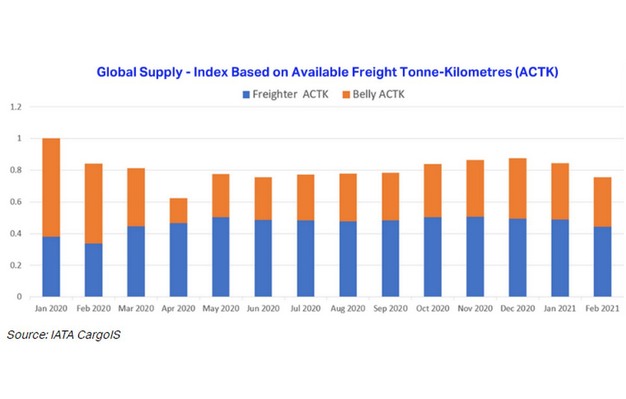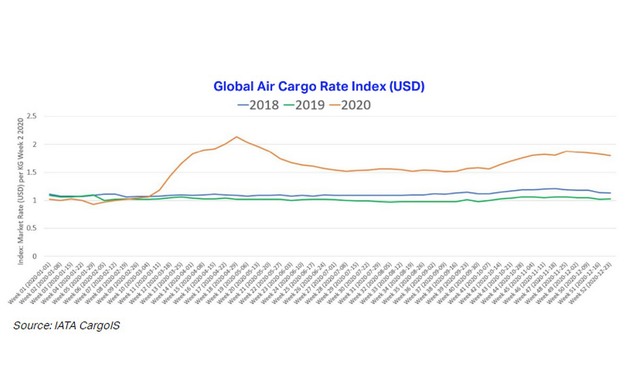The air cargo market's volatility makes developing a reliable and sustainable air shipping strategy increasingly challenging.
With air freight capacities fluctuating and market conditions being unpredictable, shippers and manufacturers need more efficient ways to develop sustainable air freight shipping solutions. The best way to accomplish this is through reliable and comprehensive data.
Data is a powerful tool for anyone creating a successful air shipment strategy or who is working in air cargo procurement. By leveraging historical air cargo market data and establishing appropriate benchmarks, businesses can achieve significant cost savings and optimize their shipping efficiency.
Let’s explore three simple ways to optimize your shipping strategy with data:
1. Understand market trends.
Traditionally, shippers and manufacturers have relied on freight forwarders to identify the best air freight shipping options. However, with tighter profit margins, businesses can’t rely solely on third parties to dictate essential and potentially costly supply chain elements. Fortunately, today’s companies can access historical data on air freight shipments, giving them the appropriate insight to understand the market better and find optimal solutions for their business.

While all shippers and manufacturers faced the same problem, those with access to reliable data could gain the insight needed to make more informed decisions when building an effective shipping strategy during uncertain times. By looking at historical trends, you could better understand their current circumstances:
 By monitoring air cargo rates and the growth in weight transported for destination airports near one another, they could identify alternative trade lanes to meet their shipping needs and expected rates for air cargo. In this case, the data showed that Liège Airport (LGG) was the best option for businesses wanting the optimal shipping route for HKG-EU.
By monitoring air cargo rates and the growth in weight transported for destination airports near one another, they could identify alternative trade lanes to meet their shipping needs and expected rates for air cargo. In this case, the data showed that Liège Airport (LGG) was the best option for businesses wanting the optimal shipping route for HKG-EU.
2. Improving negotiating power with shipping partners
Understanding market trends makes for better-informed decision-making. But being able to explore your options with appropriate benchmarking and monitoring also levels the playing field when negotiating with freight forwarders.
3. Developing air freight shipping strategies unique to your business needs
Above and beyond business negotiations, data is an important asset for anyone tasked with building cost-effective strategies for their business. Air freight shipping is no different. Still, most shippers and manufacturers have particular and unique business needs.
A relevant and valuable source for air freight cargo should include relevant data on:
- Trade lanes, including origins and destinations at airport-to-airport level.
- Time, broken down by month, quarter, and year.
- Weight breaks by category and tonnage.
- Freight forwarders, including headquarters and branches
Airlines, currently operating and previously operated.
The benefits of a data-backed air shipping strategy:
- Reduced costs
- Efficient network planning
- Effective trade-lane evaluation
- Improved business negotiation
- Employing a data-driven approach to your air freight shipping ensures a more efficient and resilient supply chain that will save your business time and money.
For more information: iata.org
